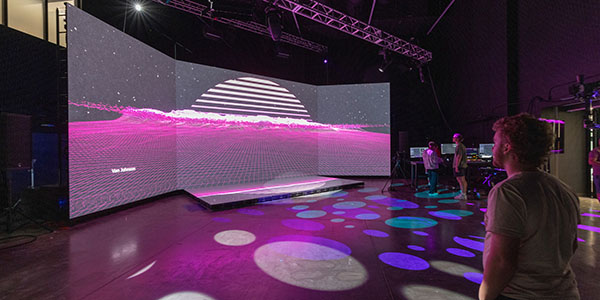Princeton Review ranks Miami as one of top schools for game design
University is in top 30 overall, No. 8 among public schools

Princeton Review ranks Miami as one of top schools for game design
There are several reasons for that, said Michael Bailey-Van Kuren, the chair of Miami’s Department of Emerging Technology in Business and Design (ETBD). Miami’s holistic approach helped the university land on the Princeton Review’s Top 50 Undergraduate Schools for Game Design for 2025.
Miami is No. 29 overall and No. 8 among U.S. public schools. The university was first selected for the inaugural 2010 rankings and has been on the international list nearly every year since.
University-wide support and dedicated faculty members have been crucial, according to Bailey-Van Kuren.
“What our program does well is our holistic approach,” Bailey-Van Kuren said. “Even though students can specialize, such as in game art, game development, or storytelling, they also have to gain a core knowledge across all areas.
“Students who come here want to have that experience where they can learn across the board and develop their own specialty.”
Bailey-Van Kuren pointed to transmedia-based facilities, such as the Extended Reality (XR) Stage located in the McVey Data Science building, as a positive for Miami.
“The transmedia part is really important,” Bailey-Van Kuren said. “Games overlap with so many other media formats, from the XR Stage to movies to graphic novels. Good storytelling, game mechanics, and art hit a lot of fields and not just what you traditionally think of as games.”
Miami also is No. 7 in Princeton Review’s Midwest regional rankings.
There are currently 175 students enrolled in the Games and Simulation program, 30 of whom recently participated in the Game Developers Conference in San Francisco, along with three Miami faculty members.
“This is an experience we provide juniors and seniors each year,” Bailey-Van Kuren said. “It gives them a chance to network within the industry and grow their knowledge in the game design field.”
According to the Princeton Review, the 2025 list was based on a 2024 survey of administrators at 150 institutions, both in the United States and globally, that offered game design studies. Four areas were included in the survey – academics, faculty, technology, and career prospects – and more than 40 data points were used to determine the final rankings.
PC Gamer has served as the Princeton Review’s reporting partner since 2013 and will have a feature on the rankings in its May edition.
“I do think this is one of the signposts out there that people will look at,” Bailey-Van Kuren said. “We’ve been a strong school on the list for over a decade.”